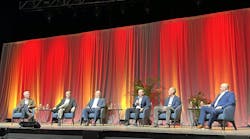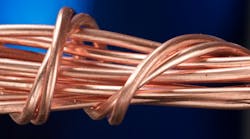A year ago, the outlook for copper pricing was pretty rosy. Market watchers were calling for continued strength in demand from a booming economy in the U.S. and elsewhere.
Copper began the year strong at about $3.30 per pound on the Comex and bumped around between there and $3.00 until June, hitting highs not seen since 2014 along the way, despite worries about the impact of U.S. import tariffs on global trade.
As metals analyst John Gross, publisher of The Copper Journal recalled this week in his look at the year just past, “the opening comment of The Copper Journal on December 22, 2017 stated emphatically, ‘Damn The Torpedoes, Full Speed Ahead’, and went on to recite in chapter and verse, that ‘Big Red’ had notched its 13th consecutive daily advance for a total gain of 29¢, or 10% from December 6th through the 22nd, and there was not a cloud in the sky, or problem on the horizon.”
In June, after hitting a four-year peak early in the month, copper prices sank and have now lost 20% on the year. Comex prices closed the year at $2.63 after hitting a low for the year at $2.56 in August.
This week rising concerns about the global economy and particularly signs of slowing growth in China, the world’s largest consumer of copper, have copper prices continuing lower on expectations of declining demand. China’s manufacturers purchasing index fell into slow-down territory in December with a reading below the 50-point threshold for the first time since May 2017.
All the same, mining companies remain bullish on copper’s long-term outlook, based in part on the shift of the global transportation sector to greater use of electric vehicles, which use considerably more copper than internal-combustion vehicles, along with pushes toward greater electrification of building systems globally.
Low near-term pricing is dampening producers’ enthusiasm for investing in more capacity, though, as investors urge them to be disciplined about spending. Miners are spending a third of what they did five years ago on new projects, according to commodities consultant Wood Mackenzie.
Expanding capacity through mergers and acquisitions is likewise out of favor. Mining deals are on track to total about $40 billion for the fourth consecutive year, a fraction of the record $131 billion spent in 2011, according to Dealogic.
Freeport-McMoRan, the largest copper miner, said in October that low pricing was causing the company to slow plans for new large-scale investments but said the reduced spending will add to expected supply gaps. The expectation of demand outstripping supply over the longer term underlies a lot of bullishness among metals investors.









